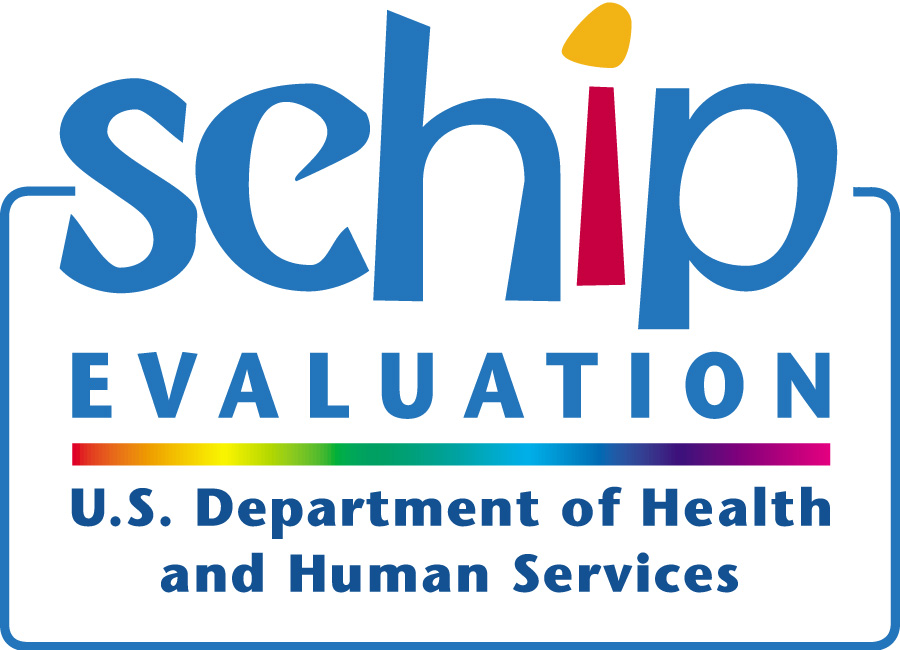

Main Menu HOME Evaluation Overview Research Description Focus Groups SLAITS Special Studies SCHIP Legislation --SCHIP Authorizing Legislation --BBRA Evaluation Mandate Other DHHS Research on SCHIP Contact Us |
Research Description
For much of the last decade, policy makers at all levels have struggled with the question of how to provide health coverage to the large population of uninsured Americans, particularly children. In 1997, Congress took a major step toward addressing the lack of insurance among children by creating the State Children’s Health Insurance Program (SCHIP), which gave states new authority and funds to provide health insurance to low-income uninsured children. SCHIP represents the most significant expansion of health insurance coverage in the United States since Medicare and Medicaid were established in 1965. Enacted as Title XXI of the Social Security Act, SCHIP made approximately $40 billion in federal matching funds available to states over ten years to provide coverage to uninsured children below 200% of the federal poverty level. States have the flexibility under the law to provide the coverage through: 1) an expansion of Medicaid; 2) a separate state program; or 3) a combination of the two. By 1999, all states and the District of Columbia had approved SCHIP plans in effect. Generally, states have three years to spend each year’s allotment, after which time unspent funds are redistributed to states that spent their entire allotments. (Recent budget legislation permitted States to retain a substantial proportion of their unspent 1998 funds and gave all states more time to spend their 1998 and 1999 allotments.) Twelve states and all the territories spent their entire 1998 allotments. Approximately 3.3 million children were enrolled in SCHIP in FY 2000, a 70 percent increase over the number enrolled in FY 1999. By FY 2001 that number increased by 39 percent to 4.6 million children. At the same time, it is estimated that as many as 2 million children who are eligible for SCHIP are not enrolled in the program. A growing number of states are expressing interest in using their SCHIP funds to cover the parents of SCHIP-enrolled children. They cite among their reasons a desire to improve coverage rates among low-income parents, evidence that children are more likely to be insured if their parents are covered too, and the availability of SCHIP dollars even after extending eligibility to all low-income children. ASPE’s SCHIP Evaluation The Balanced Budget Refinement Act of 1999 required the Department of Health and Human Services (DHHS) to conduct an evaluation of SCHIP to determine the effectiveness of the program and to provide information to guide future federal and state policy. The Department’s Office of the Assistant Secretary for Planning and Evaluation (ASPE) has contracted with Mathematica Policy Research Inc. (MPR) to conduct the evaluation. The Department’s SCHIP evaluation is multi-faceted in several respects. First, the study is broad in scope; it will address eight major topic areas ranging from program design to access and utilization. Second, the evaluation uses multiple research strategies, including case studies, surveys, and focus groups, to examine the questions of interest. Finally, the evaluation is designed to provide useful information to multiple audiences: federal and state policy makers, the wider policy community, researchers, and program administrators. Research Questions Areas of inquiry that the evaluation will address include the reasons why some eligible children are not enrolled in SCHIP, the effects of cost-sharing and premiums, outreach issues, the impact of SCHIP on access to care, and the relationship between SCHIP and other public and private coverage. The study will also explore what factors have influenced states’ program design choices. Below are illustrative examples of questions the evaluation will explore: Program Design
Impact on Uninsured
Enrollment and Retention
Premiums and Cost-Sharing
Outreach
Access and Utilization
Barriers to Participation
Relationship Between SCHIP and Other Coverage
Research Components In order to address the broad range of topics outlined in the Congressional mandate, the design of this evaluation is necessarily complex. It comprises both quantitative and qualitative research components which, when integrated, will provide a rich and comprehensive assessment of SCHIP. The quantitative components include:
The qualitative components include:
Contractors ASPE has contracted with Mathematica Policy Research, Inc. (MPR) and its subcontractors, the Urban Institute and MayaTech Corporation, to conduct the major components of the evaluation, including the survey of new and established enrollees and disenrollees in ten states, the case studies in those states and the survey of all SCHIP administrators. Health Systems Research, Inc. (HSR) is under contract to conduct the focus group study. On an ongoing basis, ASPE will fund smaller special studies that complement the large-scale evaluation by looking at important issues that may not be a primary focus of the evaluation. Among the issues that will be addressed this year are access to SCHIP in rural areas and states’ experience in using SCHIP funds to cover parents of Medicaid- and SCHIP-eligible children. Communications and Dissemination ASPE is committed to sharing results from the evaluation with state and federal policy makers and other stakeholders throughout the study period. During the early stages of the evaluation, our communications will include briefings and presentations that describe the study’s central purposes and its research design. As the evaluation progresses over the coming three years, ASPE plans wide dissemination of the findings through a series of reports. The first report to Congress is due in early 2003. Please continue to check this page for updates on our communications activities. Contact Information If you have questions or need additional information about the evaluation, please email us at SCHIPeval@hhs.gov. |
[ HHS Data Council
| Research
Activities | Alternative
Access | What’s New |
Accessibility | Funding
Employment | ASPE Home
Page | Privacy]
Search Further [No longer maintained.] |
|
HHS |
Please direct your questions or comments to the Webmaster.
This page was updated last on January 2, 2003.